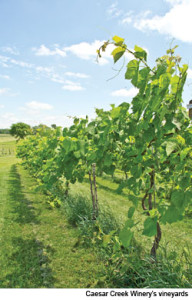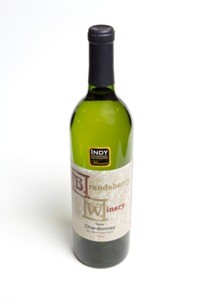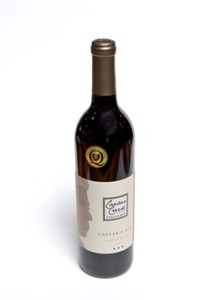By Danny Restivo
 Tasting wine at a posh chateau in the south of France is the same as tasting wine outside a soybean farm in Xenia, Ohio.
Tasting wine at a posh chateau in the south of France is the same as tasting wine outside a soybean farm in Xenia, Ohio.
The process is mirrored in either venue.
Hold your glass up to the light and get a look at what you’re tipping back. Then give it an effortless little swirl before smelling the wine as the fragrance is released. Take a sniff and try to trace the origins of the scent before you sip. Let it float on your tongue as your palette soaks in the flavor. Repeat as often as necessary.
It may take some fine-tuning, but you don’t have to travel to Napa or Europe when you can get plenty of practice in Southwest Ohio.
As America falls deeper in love with wine, indulging in the Dionysus drink has become prevalent in the Midwest, and the Miami Valley has responded in kind.
“There are wineries opening up faster than you can shake a stick,” says Jim Brandeberry, owner of Brandeberry Winery in Enon. “Wine has become the ‘in’ thing.”
There are now more than 170 wineries in Ohio, a 41 percent increase from 2008, making the Buckeye state the seventh largest wine producer in the United States.
While many of the state’s vineyards have congregated up north, interest in Ohio wine is getting stronger where it first originated.
The Rhineland of America
As the Ohio frontier opened up to settlers in the early 19th century, Southwest Ohio became the scene of the first considerable wine production in the United States. Because of its temperament soil and slope-laced hills, the Ohio River Valley was dubbed the “Rhineland of America.” In 1823, Nicholas Longworth, a forefather of Ohio wine, planted the state’s first grapes along the Ohio River. By the 1860s, the Buckeye State was producing more wine than any other part of the country. However, the Civil War, grape disease and Prohibition landed a heavy blow to the industry.
One hundred and fifty years later, with the introduction of hybrid grapes and innovations in viticulture (the study of grapes), Ohio has revisited a very popular pasttime.
“In the past 10 years, people’s perceptions have changed dramatically,” says Joe Schuchter, head of marketing and sales for Valley Vineyards in Morrow. Schuchter’s grandfather, Ken Schuchter, started planting the family vineyard in 1969. Through hard work, plenty of tribulations and a growing interest in wine, Valley Vineyards has become a premier destination for Ohio wine. With a 96-acre vineyard and 34 different types of grapes, it’s the second largest vineyard and the fifth largest winery in Ohio.
At just 10 miles into the Ohio River Valley, the soil surrounding Valley Vineyards is ideal for grapes. Given the varying climate in Ohio, maintaining a consistent temperature is key to success. A large body of water, like the Ohio River or Lake Erie, mollifies the soil so grapes can prosper.
“From Dayton to Akron, there really aren’t a lot of wine vineyards because there is nothing to temper the climate,” says Schuchter.
Nearly 40 miles north in Xenia, where green tumbling farmlands dominate the landscape, sits a seven-acre vineyard that dates back to 1804. Along this backdrop, Caesar Creek Winery harvests its own grapes for bottling. It’s one of a handful of vineyards located in the center of the state.
“There is still a lot of experimenting to be done, which is kind of exciting,” says Patricia Chalfant, the viticulturist and winemaker at Caesar Creek Vineyards. “It’s hard to grow grapes in this area. You have to know what you’re doing.”
The vineyard grows nine different types of hybrid grapes used in 10 different wines, creating 20,000 bottles of wine in 2013.
Chalfant says Caesar Creek will have plenty of grapes for the rest of the year. However, this year’s brutal winter will almost certainly cause issues for next year’s harvest. Since many of the grapes Caesar Creek grows are hearty and built for the winter, Chalfant believes the winter wasn’t as bad here as it might have been for others in the state.
“We will be a little short compared to previous years, but we’ll still be making wine.”
Sweet Ole Wine Drinker
A merlot from France, or a pinot grigio from Italy might score you some sophistication points at a local dinner party, but the demand for dry stuff in the Miami Valley isn’t like elsewhere.
While Napa Valley and upstate New York have maintained world-renowned reputations for complex cabernet sauvignons or rieslings, the same popularity has not yet made it to Middle America.
Many local wineries carry established wines that resonate with dry wine aficionados. However, many Miami Valley wine drinkers prefer the sweet stuff over some traditional favorites.
The Winery at Versailles, located about 50 miles north of Dayton, supplies to all tastes, but its most popular item is the “Rodeo Red,” a light and sweet red wine that has a fruity undertone.
“It’s an unpretentious wine,” says Mike Williams, owner of the Winery at Versailles. Since 2004, the winery has “offered quality wine to appreciative wine neophytes and connoisseurs alike.”
The Winery at Versailles is in the heart of Ohio farm country. Located just off U.S. Route 127, the winery is remote to any major interstate thoroughfare or a large metropolitan area. It might seem like an odd place for an Ohio winery, but Williams has found success selling wine to rural crowds. In 1994, he opened his first winery in Wilcox, Pa., a small town in north central Pennsylvania. In eight years, he turned the winery into the third largest in the Keystone state.
“When you’re in a rural area, you can’t draw as many people, so you have to cater to what is around you,” says Williams.
The Winery at Versailles has several other signatures, including Spiced Apple and Niagara, a white wine with a sugary taste of ripened fruit. The wines are tailored to the novices, whose palettes aren’t quite ready for New Zealand cabernet sauvignon blanc or a French chardonnay. By introducing customers to less brazen wines, Williams hopes newbies will venture into unchartered territory.
“Its all about experimenting with different tastes,” he says.
As a viticulturist and winemaker, Chalafant wants customers to have the same experience at Caesar Creek, but giving the customers want they want remains paramount.
“People like our dry wines, but at the end of they day they drink sweet,” she says. “The sweet wines will pay your bills, and the dry wines are what you hang your hat on.”
The trend remains the same in Enon, where Brandeberry’s dry and sweet wines have won a host of awards. The former dean of engineering at Wright State University was never much into wine until he visited New York’s Finger Lakes nearly 20 years ago. After buying a winemaking book, he began refining the practice in his basement until he started his own winery in 2009.
With a collection of accolades hanging from his tasting room, Brandeberry’s Sweet Blackberry makes up 20 percent of his sales from his list of 25 wines. His Black Dog, a sweet mix of raspberry and grape, and Sweet Mingo, a sweet grape with peach flavors, are top sellers that contribute to a large chunk of his sales.
“The grocery store has mostly dry wines, so the people who like sweet wines go to a lot of the wineries,” says Brandeberry. “Many of [the grocery stores] are too snobbish to have a good sweet wine from Ohio.”
Almost all the wineries say their clientele cuts across demographics and wine experience. Although it’s still not uncommon for winemakers to see the local guy who drinks nothing but Bud Light begrudgingly enter the winery with his wife, after a few tastes his outlook on wine is much different.
“It’s usually their first encounter with wine and no matter what their level of wine experience is, encountering someone for the first time is always exciting,” says Chalfant. “When they go home with a bottle, it’s always fun.”
 Brandeberry Wineries, Premium Reserve Chardonnay, $18.95 a bottle
Brandeberry Wineries, Premium Reserve Chardonnay, $18.95 a bottle
It’s America’s most popular wine, partly because of its complexity and versatile use of fruit. With an apple-scented nose, Brandeberry’s chardonnay is among the finest of its sort in the Miami Valley. Whether you’re a sommelier or a wine greenhorn, this smooth white pairs well with sunny days, friends and spirited conversation.
| Caesar Creek Vineyards, Caesar’s Red, $15.95 a bottle The use of Frontenac grapes allows a dry and earthy taste to shine through. Caesar’s medium body, balanced acidity and cherry undertones make for an excellent glass to accompany you at any party. Labeled an Ohio Quality Wine by the Ohio Grape Industries Committee, the estate-grown wine has a distinct flavor that separates it from others. We tasted some excellent wines for this story, but this one stole our wine-loving hearts. |
LIST OF AREA WINERIES

